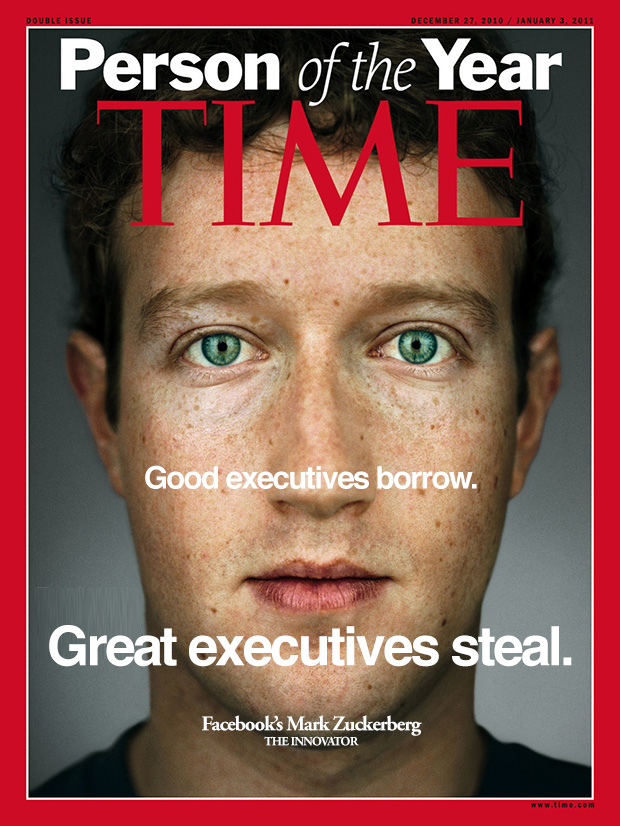Facebook's strategy: Buy the best, copy the rest?


Facebook-owned Instagram, the artsy mobile photo sharing service, announced yesterday the launch of a new capability: video.
You can read my colleague Rachel King's report from the conference here.
If you're a fan of consumer mobile apps, Instagram should be familiar to you. If you're not, you may hazily recall our headline about Facebook's $1 billion purchase of the revenue-less startup. The consensus about that acquisition was that Facebook wanted traction in the rapidly growing mobile photo sharing space, and that the deal was entirely defensive: keep Instagram out of rivals' hands and keep its users in Facebook's customer database.
(Two weeks before it announced the Instagram deal, Facebook rolled out a standalone photo-sharing mobile application with filters called "Camera." Call it an homage.)
Facebook's chief rivals, of course, are Google and Twitter, the other two dominant social networks. One is a massive corporate behemoth working to catch up after a failed attempt ("Buzz"). The other is a comparably small but market-leading presence looking to expand beyond its core, 140-character product.
In the case of Twitter, that company released in January of this year a second product: Vine, a mobile application for sharing six-second video clips. At first, we were puzzled: what good is this? And then we realized that brief video snippets are wildly entertaining. (And at best, not long enough to be terribly boring.) The young app demonstrates the kind of ease of use that makes a social platform compelling.
As we saw yesterday, Facebook-Instagram's answer to this is a 15-second video clip. The difference seems inconsequential, but the real threat is in Instagram's more than 130 million users (and Facebook's almost 1 billion users). In comparison, Twitter has 500 million users (200 million active) and Vine has "tens of millions" of them. It is clear which company is David and which is Goliath.
To borrow a hockey metaphor, it is also clear which one is aiming to cross-check the other into the boards.
And that's just it, really: Facebook has managed to—with admirable focus—fend off companies creating social networks that threaten to draw its users outside its vast walled garden. This is the kind of defensive corporate behavior that we usually see from much more mature technology companies, such as Microsoft, Google and Apple. (On the other hand, Facebook will celebrate its 10th anniversary next year, so perhaps it's time to discard the notion that Facebook is young, new or anything less than the establishment.)
Facebook's product history is littered with such moves:
- In September 2006, Facebook introduced the News Feed, which brought a real-time aspect to its network. Twitter launched earlier that year.
- In May 2007, Facebook introduced Marketplace, a targeted, in-network rival to Craigslist.
- In May 2007, Facebook introduced Videos. Google's YouTube dominates here, but MySpace was also a major player at the time.
- In April 2008, Facebook introduced Chat, a real-time instant messaging client. Google is the dominant purveyor of in-browser instant messaging.
- In August 2010, Facebook introduced Places, allowing you to "check in" to a location. Foursquare and Gowalla first popularized the concept.
- In November 2010, Facebook revamped its user-to-user messaging system into the unified Messages, which gave every user a Facebook e-mail address. Google, Microsoft and Yahoo have long led this mature area.
- In 2011, it added voice and video calls to the mix, competing directly with Google's established offering through Gmail.
- In 2011, Facebook began allowing its users to "follow" other people. Twitter first popularized the concept.
- In August 2011, Facebook introduced photo filters. Instagram first popularized the concept.
- This week, Facebook introduced the use of hashtags in its status updates. Twitter first popularized the concept.
- This week, Facebook-owned Instagram introduced a limited-duration video clipping feature. Twitter's Vine first introduced the concept.
It's not hard to understand the reasoning behind all of this: Facebook wants to keep you using Facebook. If it can create products that are good enough to use within its walled garden, customers won't leave it.
But then you've got to start wondering: is Facebook's entire product strategy now predicated on defensive maneuvers?
Despite almost 5,000 employees around the world, does Facebook have any major ideas of its own to offer?
Writing for BuzzFeed, my friend John Herrman asks as much:
Facebook is out of ideas. In its view, nobody else can truly innovate, because without Facebook, an innovation doesn't matter — an idea isn’t a big idea until it's on Facebook, the real internet, with its billion graphed-out users. Facebook's own innovations, like Graph Search, are limited by the same skewed perspective; they're all based on the premise that people want more Facebook.
I would offer a slight twist to his statement. In my view, Facebook knows innovations are out there, but it moves swiftly (and thus savvily, but also shamelessly) to acquire or destroy them. Its actions are based on the premise that for the company to survive, people have to want more Facebook. And not something else. It's not a matter of us as users giving the company permission; the company sees it as implicit after a critical mass of people adopt a feature elsewhere.
Herrman's point about a dearth of original ideas at Facebook raises another, though. Given Facebook's unmatched user base and deep pockets, does it even need to have them?